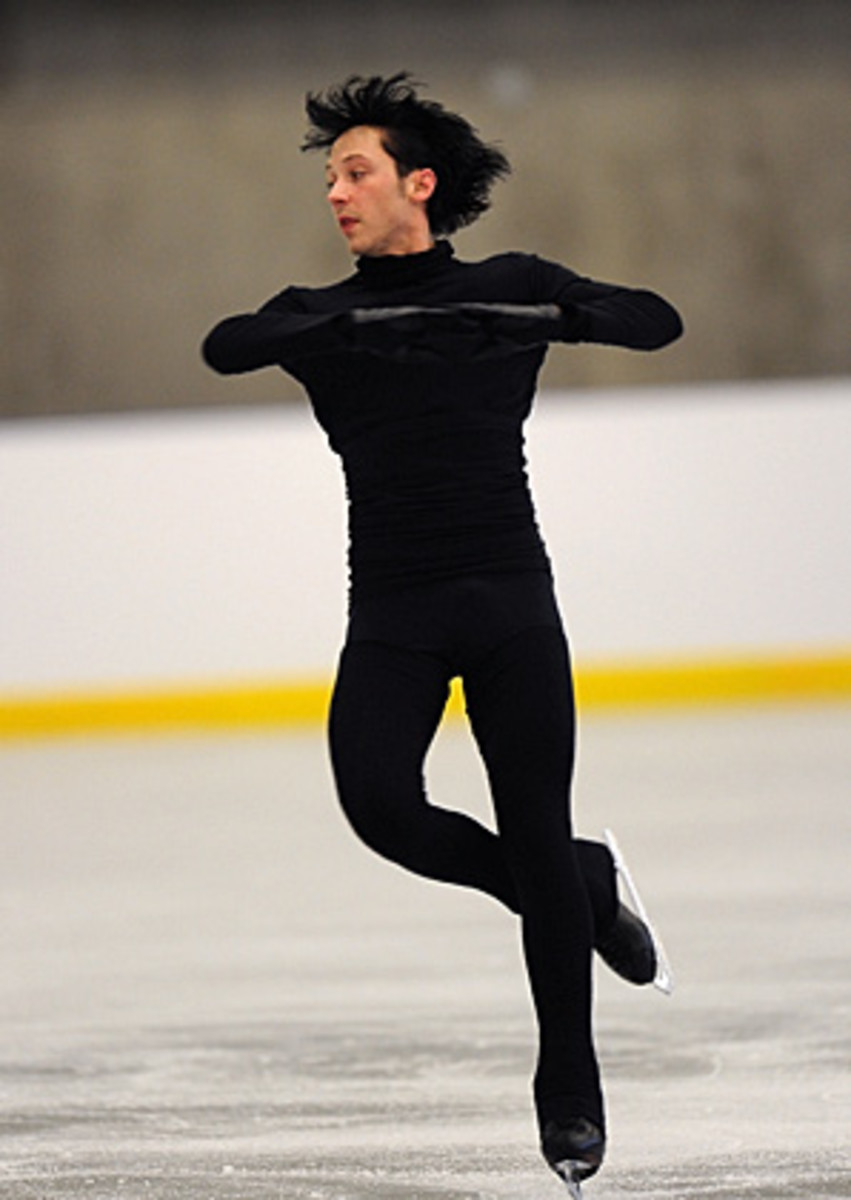
Judge's e-mail exposes corruption of figure skating's scoring system
Another judging controversy in figure skating. Just what the sport needs. And in many ways, just what it deserves.
This one started, however innocently, after U.S. judge Joe Inman sent an e-mail to about 60 of his fellow judges and skating officials. In it he criticized the "transitions" of the reigning men's Olympic, European and Russian champion, Evgeni Plushenko, citing Plushenko's own comments as evidence. (Transitions are the connecting moves that link the showier elements of a program, such as jumps, making those elements more demanding and visually interesting.) Inman's e-mail cited an interview that Plushenko gave to the Web site AbsoluteSkating.com after his most recent European championship, in Tallinn, Estonia, last month. In that Q&A, Plushenko was quoted as saying: "If the judges want someone to place high, they can arrange it. Like in Tallinn, Brian Joubert [of France] got more points for his transitions than me, although we did exactly the same transitions on the ice. In fact, we don't have any transitions, because we focus on our jumps."
In the e-mail, Inman, who teaches judging seminars in the summer but is not judging in these Olympics, commented on that last remark: "I find it an interesting observation of his own skating and the judges' marking of transitions."
I know Joe Inman, and I find him a surpassingly fair and knowledgeable judge. He is not a homer. He placed beloved American skater Michelle Kwan third at the Salt Lake City Games in 2002. He cares about his sport passionately and is especially mindful of the musicality of a skating program. In short, he loves good artistry. His point in sending the e-mail? To remind his fellow judges to mark each program's component element individually, as they're supposed to do -- elements that include transitions, skating skills, performance, choreography and musical interpretation. (These formerly were lumped into one category, the artistic mark.) It is not exactly news that Plushenko and Joubert, who are brilliant jumpers, have weak transitions, while the likes of Canada's Patrick Chan and the U.S.' Jeremy Abbott, less athletic jumpers, have strong transitions. In ISU judging seminars last summer, according to Christine Brennan of USA Today, the opening 90-second segment of Plushenko's 2006 Olympic free skating program was used as an example of weak transitions between jumps; only when the Russian Federation protested were another skater's transitions substituted. By sending his e-mail, Inman was simply using Plushenko's own words to make a point that Inman had been pushing in the judging rooms for years. But it became a front-page story, and the controversy erupted, when the e-mail was leaked to the French newspaper L'Equipe. That paper showed Inman's note to Didier Gailhaguet, president of the French Skating Federation, and Gailhaguet bit: "It just proves the North American lobby is on its way."
Casual fans of figure skating may have forgotten that Gailhaguet was a central figure in the Olympic judging scandal in Salt Lake City. So his words do not exactly descend from the mount. He essentially fixed the 2002 pairs competition by pressuring a French judge to vote for the Russian team, a transgression for which Gailhaguet was suspended by the weak-willed ISU for a mere three years. He is now right back where he'd been. For Gailhaguet now to speak of a "North American lobby" in connection to Inman's above-board, innocuous e-mail is the height of Gallic gall. He should go stand in a corner wearing a dunce cap, scribbling "Je suis desolé" until the old 6.0 scoring system is brought back.
But I digress.
Not really. The old 6.0 scoring system, beloved by audiences because it was understandable and nakedly subjective, was scrapped as a result of the Gailhaguet-orchestrated Salt Lake City scandal. Judges often propped up their favorite skaters by using the second, artistic mark, and their partisanship was there for all to see. And to boo. It was great theater. Now judges prop up their favorite skaters by using the five "program component" marks -- except that viewers in the stands and at home never see those marks and are left to scratch their heads at the numbers that flash on the screen determining winners and losers. As one coach recently told me, "The judges used to have one mark to monkey around with. Now they have five."
Five, plus a cloak of anonymity. In other words the new scoring system is every bit as rife with potential for corruption as the old one.
The skaters know it. Plushenko said as much in his interview about his and Joubert's lack of transitions. "If the judges want someone to place high, they can arrange it...." America's outspoken Johnny Weir is openly fearful of reprisal against American skaters: "Am I going to be judged differently because of what some stupid American judge did? Because I'm American, am I going to be judged more harshly? The program component scores is where [judges] can cheat regardless of whether you do transitions or not. If you're Evgeni Plushenko, you're going to get high [program component] scores. A lot of people are often over-marked. If Plushenko misses his quad, and if everything is based on reality, you're getting Plushenko in 10th place? I don't think so."
Weir, absurdly, went on to call for Inman's head. "I hope he's banned from judging [for] the rest of his life. It wasn't the time or place."
Actually, it was the perfect time and place. The Winter Olympics. The only time the rest of the sporting world has its eyes on this beautiful, difficult, horribly corrupt and politicized sport. Joe Inman's timing couldn't have been better.





